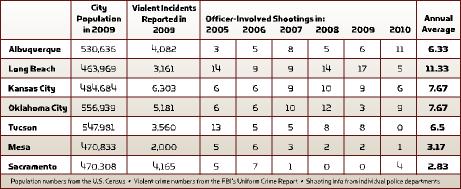Is There A Silver Bullet?: A Look At Officer-Involved Shootings And Police Training In Comparable Cities
A Look At Officer-Involved Shootings And Police Training In Comparable Cities



Latest Article|September 3, 2020|Free
::Making Grown Men Cry Since 1992




